
4 minute read
Trip Tips
SEASONALTIP-------------------------------------------------------------
Tie a Mud-Knot
This spring, avoid a muddy tail at home and on the road with a simple mud knot. California hunter/jumper trainer Andrea Scott Klug shows you how.
2

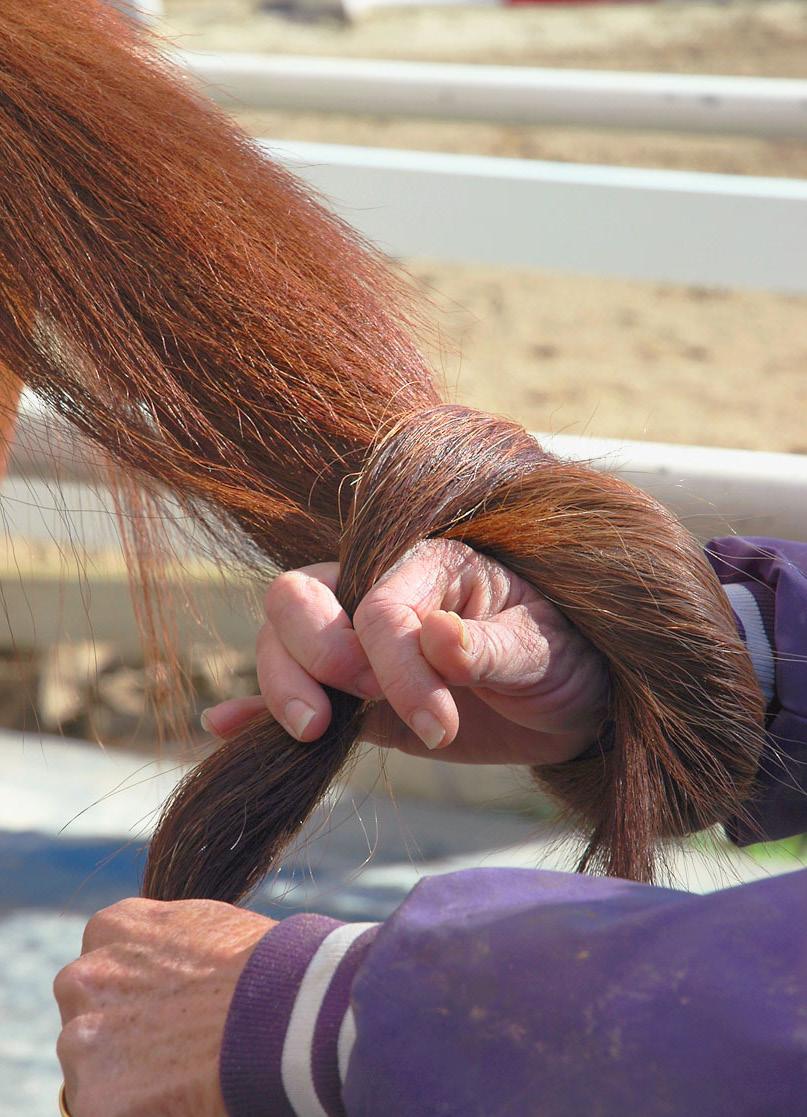
3
Step 1. Holding the tail in your left hand, put your right arm underneath the tail.

Step 2. Loop your right hand back over the outside of the tail in a clockwise direction, and bring your hand underneath the tail so that the tail is looped around your lower arm.
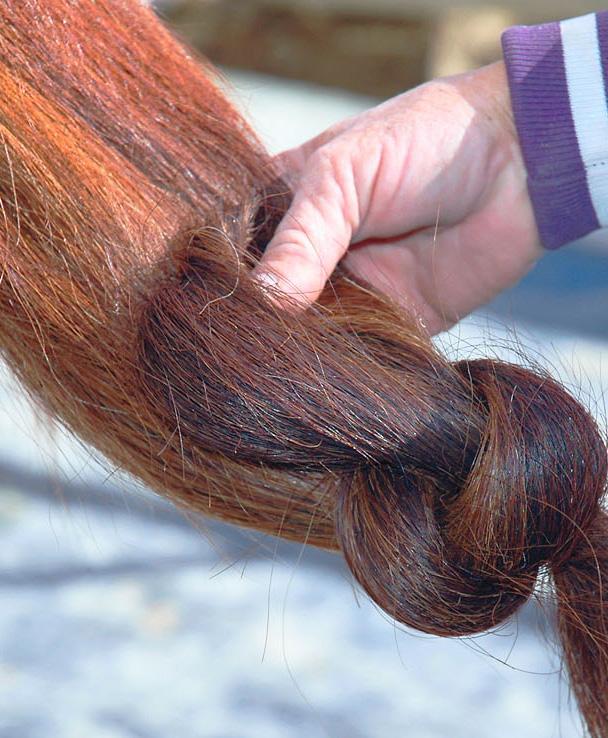
5
Step 3. Hook the end of the tail between the first two fingers of your right hand, and pull the end through the opening you’ve created with your arm in slipknot fashion.
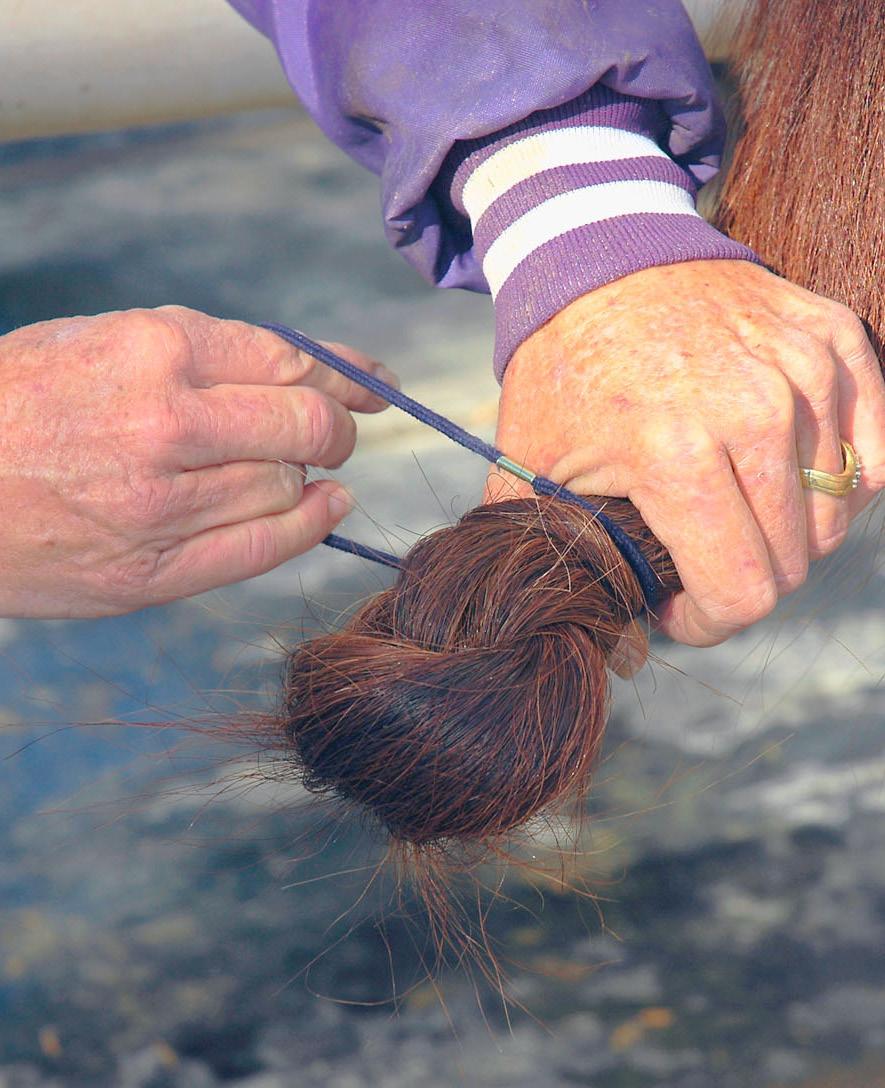
6
Step 4. Give a jerk on the end that’s still in your right hand to tighten the knot, which at this point should be about four inches below the end of the tailbone. Step 5. Fold the knot that you’ve created up to the end of the tailbone, wrapping the end of the tail around the tailbone and tucking it in.
Colorado State University veterinarians remind traveling equestrians to take steps that will help prevent the spread of equine infectious disease. Thwart infection by understanding and watching for symptoms of illness. Paul Morley, DVM, PhD, director of infection control at CSU’s James L. Voss Veterinary Teaching Hospital, recommends that equestrian travelers take the following steps. • Prepare for a trip. Before your trip, thoroughly clean and disinfect your trailer, and talk to your veterinarian about your horse’s health, vaccinations, diseases of concern, and any other relevant issues. Pack all the cleaning equipment and health supplies you’ll need on the road. • Don’t share. Contagious diseases are transmitted through contact—meaning direct nose-to-nose contact among horses, as well as your horse’s contact with surfaces that an infected animal might have contaminated with saliva, respiratory secretions, or manure. Don’t borrow or share any tack, grooming supplies, or feeding or watering equipment. • Create a clean environment. During a ride or event, separate your horse from other horses. Set up portable panels to confine your horse. If there’s a stall well away from other horses, fully clean and disinfect the site before housing your horse. • Monitor your horse for signs of illness. During a ride or event, keep tabs on your horse’s temperature, monitor feed and water intake, and watch for other signs of illness. • Segregate the traveling horse. A traveling horse may be incubating illness. Upon returning home, keep him apart from others for five to seven days. Monitor him for any illness that might arise before returning him to the home herd. — Courtesy of Colorado State University PHOTO BY CLIXPHOTO Prepare for a trip by thoroughly cleaning your trailer and consulting with your veterinarian about your horse’s health, vaccinations, diseases of concern, and any other relevant issues.
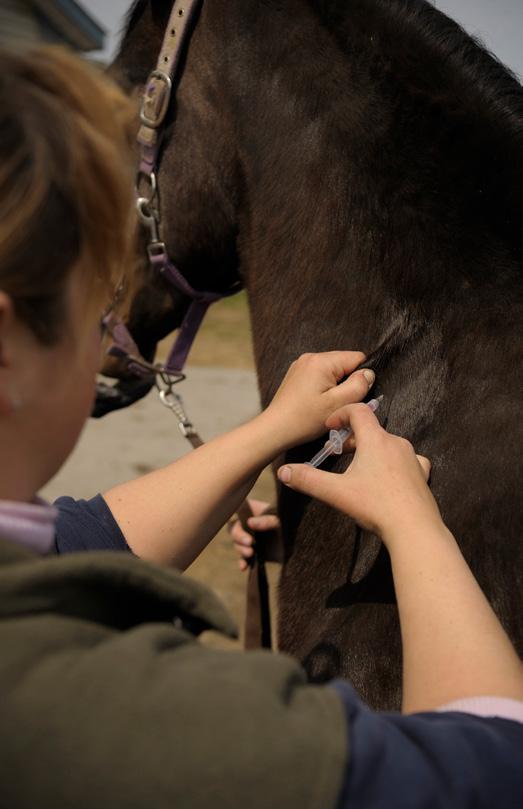
Use these eight smart ways from USRider to save fuel when you trailer your horse. PHOTO BY HEIDI MELOCCO
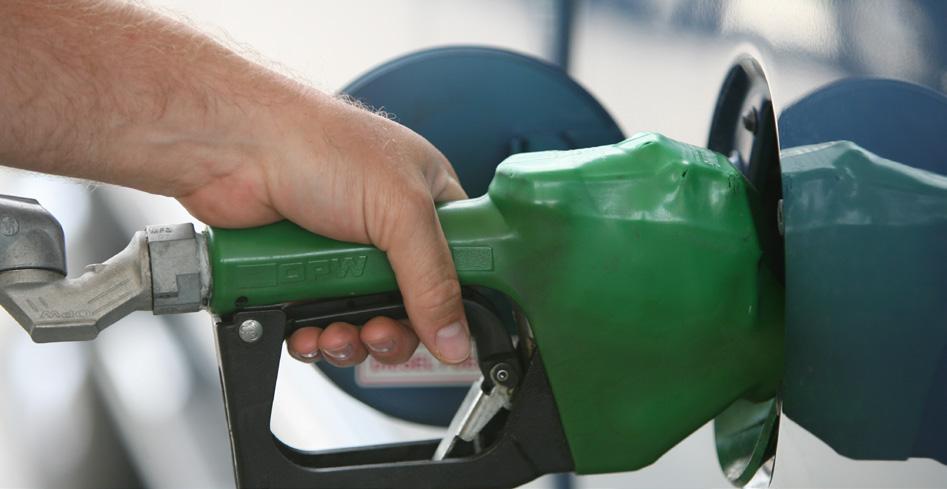
Save Fuel Use these eight smart ways to save fuel when you trailer your horse, courtesy of USRider. 1. Maintain your tow vehicle. A well-maintained vehicle uses less fuel than one maintained haphazardly. Replacing a clogged air filter can improve fuel mileage by as much as 10 percent. Replacing a faulty oxygen sensor can improve fuel mileage by as much as 40 percent. 2. Check tires. Check tire pressure regularly to maintain optimum air pressure, and have the wheels aligned regularly to prevent tires from dragging. 3. Use the right motor oil. A grade of motor oil that’s lower or higher than the manufacturer’s recommendation can lower your fuel mileage. Also, look for “energy conserving” motor oil that contains friction-reducing additives. 4. Drive gently. Avoid aggressive driving, and observe the speed limit. Fuel mileage decreases rapidly at speeds above 60 mph. Stop slowly, and avoid jackrabbit starts. 5. Avoid excessive idling. Idling gets zero miles per gallon. 6. Use overdrive gears. Overdrive typically causes the engine speed to decrease. This saves fuel and reduces engine wear. 7. Use high gears. High gears achieve the lowest engine rotations per minute (RPMs). This will generate adequate power to maintain road speed while hauling a load. 8. Keep the A/C on. The aerodynamic drag caused by keeping the windows open uses fuel. Unless you’re driving at slow speeds, rolling down the windows costs as much as, if not more than, turning on the air conditioning.










